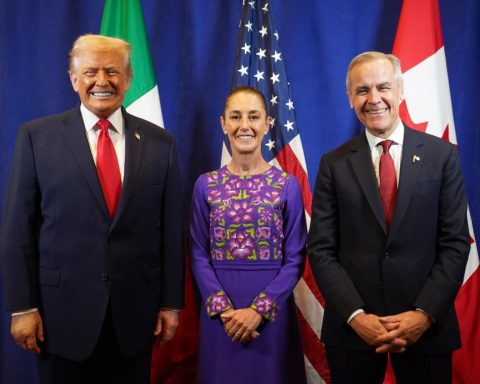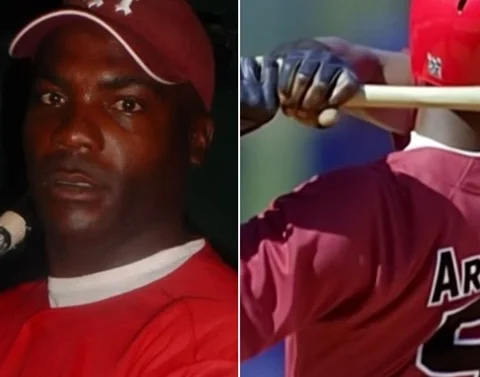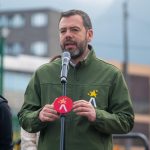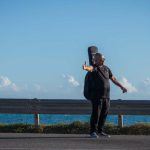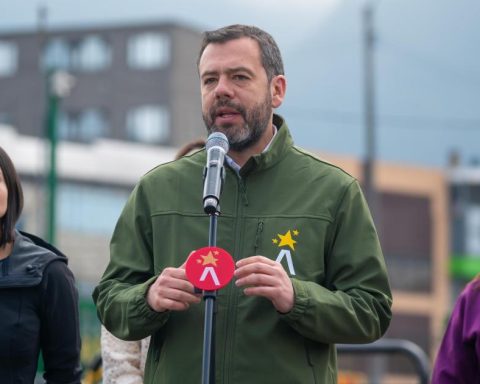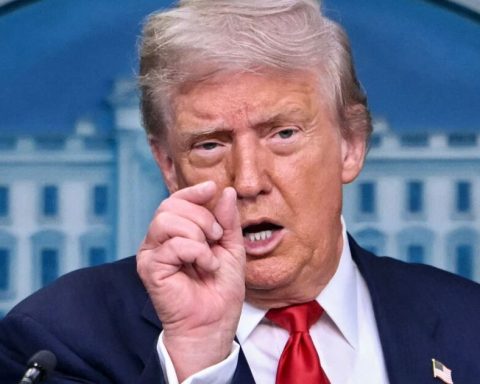Since he moved to Havana, Jorge Bonet dedicates almost all his time to two things: photography and music. He gets up very early in his apartment in Centro Habana, after drinking his usual coffee he goes on foot or by bicycle with his camera, wherever his steps take him; he never sets a destination, at the moment he appears in the Lisa or on the beaches of the East. He likes people-watching and capturing the essence of him through photos, although he doesn’t mind the lights turning on him, he prefers to be in control of the lens.
When he walks through the streets of Havana, always with the Mirrorless hanging around his neck, he doesn’t miss even the smallest event; from some children doing their thing, a clown in a bus, like a kiss from a couple that is seen in the open door of a portal. He does not mind invading these moments, in fact, it is what he is most passionate about photography, the unexpected and the portrayed of him many times they are grateful, other times not so much; as has happened on a few occasions, when encountering the anger of some parents or subjects who do not like to be photographed, mostly in places outside of Cuba. Despite this, he is always respectful to the people represented, giving them the opportunity to delete the image or send it to him by mail once edited.
He has a semi-Cuban accent, when he arrived from Spain he had to learn to put the asere at the end of all his sentences to pass as a Havanan, “of course, if at first they wanted to charge me twice for things in several places,” he says. His voice projects tranquility, the words come out of his mouth with a very leisurely rhythm, as if he had all the hours in the world, however, he does not have enough time to say everything he wants.
Jorge is 31 years old, a mop of wavy black hair, like his eyebrows that stand out above his light green eyes, he has a casual look, he always wears loose pants, he alternates wide pullovers with short-sleeved shirts; he wears colored tights. Low-cut sneakers with flat soles are essential for him “the most important thing is to walk comfortably”, he says; he sometimes wears hats because of the long walks he takes in the sun looking for stories to photograph.
It is rare that he frequents discos or nightclubs, he prefers small gatherings at his home or at a friend’s, where alcohol and a guitar should not be missing; He also enjoys going on a picket line to the boardwalk with his favorite instrument: the guitar, which also accompanies him on his solo nights, along with a glass of wine and the lyrics of Sabina, Serrat, the Beatles, Jarabe de Palo, Alejandro Sanz or even random songs in Portuguese that he can’t pronounce very well. He knows countless topics, he and his younger brother grew up listening to compositions from the last century, since his father is a music lover and has a very large record collection.
He longingly remembers his time as a rocker, at age 18, when he wore a “freaky look”, longer hair and was the lead singer of the band Pink Tacos, in Tenerife, Spain; where he lived all his childhood and his family currently lives. At the moment he has several folders on the computer that he is accustomed to seeing sometimes alone and sometimes he shows them.
He jokes that those closest to him have been jealous of his guitar, personalized with a mandala on the left side of his mouth, a mix of red, purple and yellow. He is not good at writing songs, he just composes the melody and when he is ready he looks for the lyrics; although he doesn’t act it out, he continually whistles or hums into the unconscious. Today music is a hobby for him, it is his younger brother who earns a living as a professional bass player back in the Canary Islands.
The love of the seventh art made him abandon the black sand beaches and the Santa Cruz Carnival for a time, to return to Cuba, his native country, from which he immigrated with his family when he was seven years old. Now he returned to study at the Faculty of Audiovisual Media (FAMCA), and continues to do one of his favorite activities, going to the movies, which he usually attends alone or accompanied, but without the mcflury (ice cream brand) that always accompanied him when he lived in Spain.
He defines himself as a person with a bad memory, however, he is able to talk about music, cinema, literature, philosophy and remember the exact names of each artist he learned in class; like Robert Doisneau, the French photographer, author of the famous “Kiss in front of the City Hall” (1950) and who was one of those who most encouraged him to lean towards social photography, although he is attracted to other subjects: nature, fashion, experimental and minimalism.
He bears the marked influence of many professionals in the sector that he divides into two lists: those who have taught him to look with his heart and those who have taught him to compose with his eye and brain. In unison he takes out a folder with images that he had kept on a shelf in the first room of his apartment, next to a funny inflatable cactus, which was there for no apparent reason; they are photos of him, he shows them one by one, as he mentions Vivian Maier, Burt Glinn, Cartier-Bresson and Elliott Erwitt, declining for the heart. Those who have educated the eye in a more conscious way have been: Stanley, Kubrick, Tarantino, McCurry and Alfred Hitchcock.
In solitude he usually thinks about life, because in his work he does not seek technical perfection, but rather sentimental and poetic perfection, for which he must consider many things on a daily basis; In one of his exhibitions entitled “Cuba: The secret that hides”, he touches on the concept of “presolitudes”, taken from the famous poem by Mario Benedetti called “Solitudes”; suggesting that there are solitudes that we choose and others that choose us. Shortly after coming of age he understood many things about his environment, he learned several philosophical hypotheses that served him both in photography and in film; although he only spent two years in philosophy, before leaving it to study what he really likes. He especially remembers “an inspiring crazy teacher” from whom he assimilated many interesting theories.
“My first analog photo was of a flower, when I was a student in Tenerife.” It was Wednesday afternoon; He spent almost an hour looking at it to find the best angle, every year of class, which was five, they gave each student 36 reels and he always spent all of them, he took three photos of the flower and kept the first one. He has a good eye for capturing the precise moment, the famous “decisive moment” coined by Bresson, “I don’t know how I can see situations so quickly, it’s as if the photo appeared in my head in a short instant and ‘click’, or the take or not”.
In the Canary Islands just over ten years ago, he began his work as a photographer, working for different websites, short films, video clips and as a teacher in photography courses. He confesses that art is his engine; What he likes most about photography is “being able to convey something so subtle that when someone sees the image, they probably create a common thread from the coincidence to the new story that I had not been able to perceive.” He shows his profile on Instagram, the social network where he focuses the most; there he transmits his way of seeing what surrounds him, bears the name vivo_en_una_isla, perhaps referring to Tenerife, Cuba, or to his internal imaginary that repeatedly is his only company.
Months after arriving in Havana many things changed in him, one of them, the tradition of getting wet in the downpour on May 1; because of the humidity in Cuba. The other, his relationship with silence. Despite being a lonely man, he had great respect for silence, however, he put the normality of a person speaking first; until he met a very quiet good friend, he accompanies him on his long walks to take photos; On the journeys, only Jorge’s voice was heard, until one day he decided to remain silent anyway, they did not speak more than four words all the way, but he felt comfortable and that changed his way of seeing the world.
He is good at the role of mediator, that is evident from the first minute, due to the patience he has to listen, in addition to his people skills; He realized this quality when collaborating with the Don Bosco Foundation, an organization promoted by the Salesian congregation in which he spent six months, before he did a higher module of social animation and entered the NGO to do his internship, but he felt the need to stay longer. They were locating young people who had addictions and did not have family support, there they help them to disengage and offer them the possibility of studying.
Near the end of the conversation, he stares at the neglected buildings in front of his house, sitting on the tiny balcony, Jorge stops his gaze: as if he could see inside, he remains silent for a few seconds. He believes that it is never too late to change the world and still wants to do great things, even though he has been through days of disappointment; because life has sometimes led him through unexpected scenarios. As John Lennon said, “Life is what happens to you while you insist on making other plans”, he quotes.


